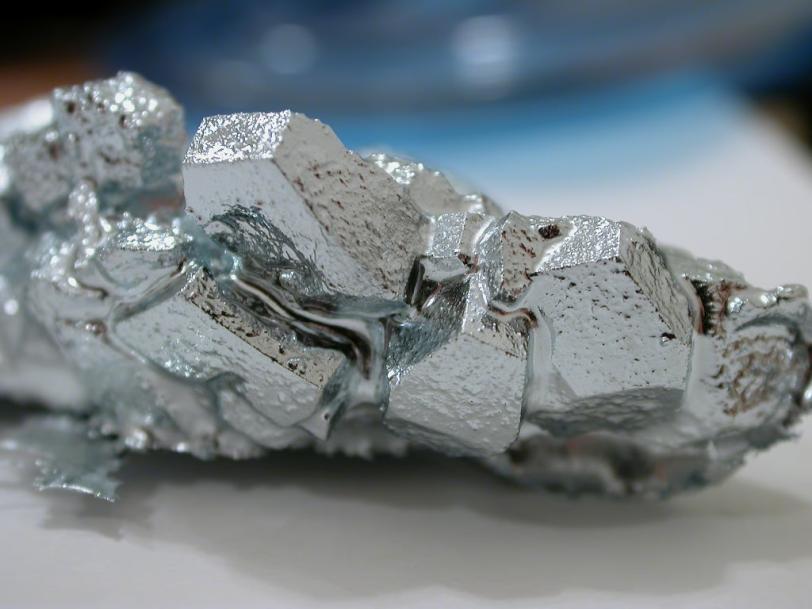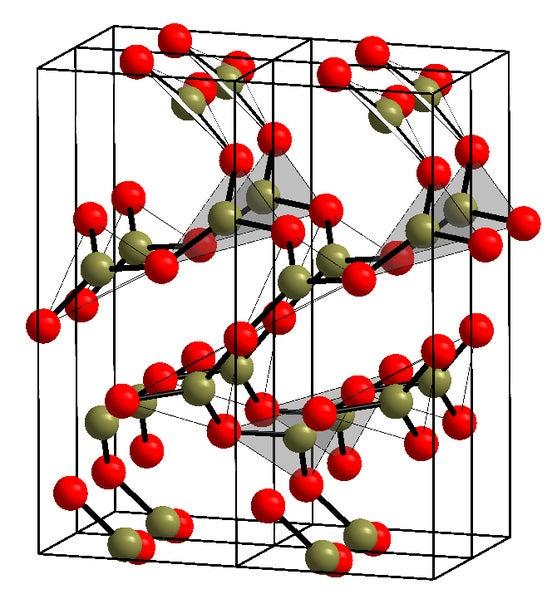Exploring Middle Ground of Solids and Liquids
In experiments at SLAC National Accelerator Laboratory's Linac Coherent Light Source X-ray laser, researchers made snapshots of atomic-scale fluctuations in liquids and glasses.
By Glenn Roberts Jr.
In experiments at SLAC National Accelerator Laboratory's Linac Coherent Light Source X-ray laser, researchers made snapshots of atomic-scale fluctuations in liquids and glasses. The results are a first step toward better understanding the mysterious middle-ground between solid and liquid.
The snapshots come in the form of atomic “speckle patterns” – images produced by X-ray laser light scattering off atoms in a sample, freezing its structure in time like a lightning flash casting shadows.
By analyzing speckle patterns taken in one quadrillionth of a second, they were able to capture snapshots of a sample's atomic structure without disturbing it with the X-ray laser. While this has been done with other X-ray sources at much longer time scales, it was the first successful test using an X-ray laser, which uniquely allows researchers to measure ultrafast processes at the atomic scale.
"Our measurements are the first snapshots of the rapid atomic rearrangements that occur in a liquid," Paul Fuoss, a senior scientist at Argonne National Laboratory who participated in the research, reported Nov. 2 in Physical Review Letters.
The technique should also shed light on the way "amorphous" materials, which have a disordered or non-crystalline structure at larger scales, transition between solid and liquid states. Examples of amorphous materials include window glass and biological tissue.
"Despite almost a century of effort, the structure and dynamics of amorphous materials and liquids remain partially, and often poorly, understood," Fuoss said. "It has been argued that the scientific achievement of the 20th century was mastery of the crystalline state and that mastery of the disordered state will be the achievement of the 21st century."
A challenge in the experiments was finding contrast in the speckle patterns, the researchers noted, as the atomic-scale technique recovers inherently faint images, and sensitive detectors were needed to measure them.
There is an active research and development effort, led by DESY researchers, to build an X-ray "split-and-delay" system at LCLS to divide the X-ray laser pulse into two separate pulses. These pulses arrive at the sample quadrillionths of a second apart, allowing scientists to record speckle patterns that reveal ultrafast atomic processes in rapidly changing materials.
The research team reported that their results identified the best conditions for capturing measurements using the split pulses, and will "lay the foundations for the design and implementation of future experiments that probe time and length scales in materials that could not be accessed experimentally until now."
Once the split-delay capability is available for experiments at LCLS, researchers say they hope to identify the elusive atomic-scale origins of solid-like behavior in a liquid as it begins its transition toward a solid.
"These results help guide the way to a range of measurements at LCLS that will probe some of the most challenging and important questions in condensed matter physics," Fuoss said.
In addition to scientists from Argonne National Laboratory and SLAC, the research team also included participants from McGill University in Montreal, Canada, Boston University and the German Electron Synchrotron (DESY) in Hamburg, Germany.

